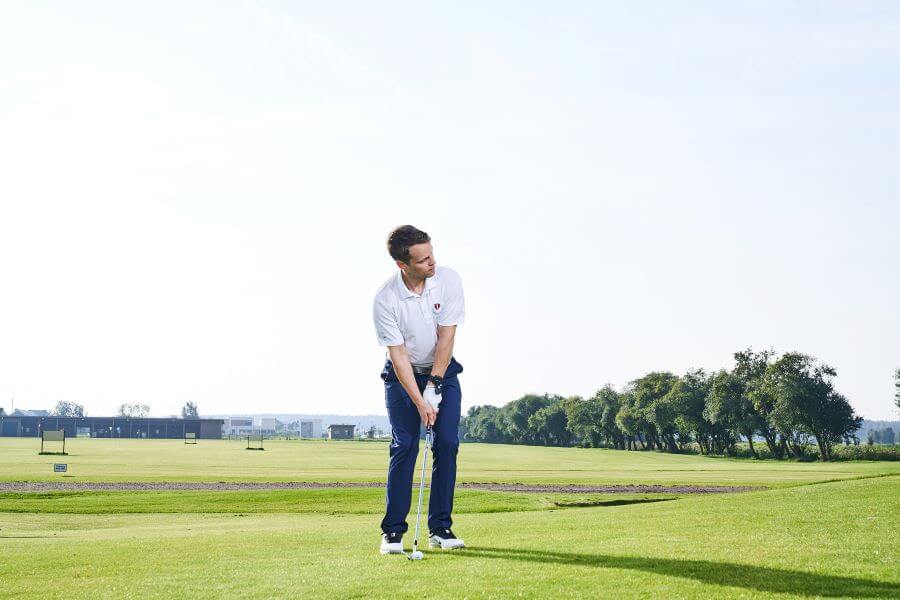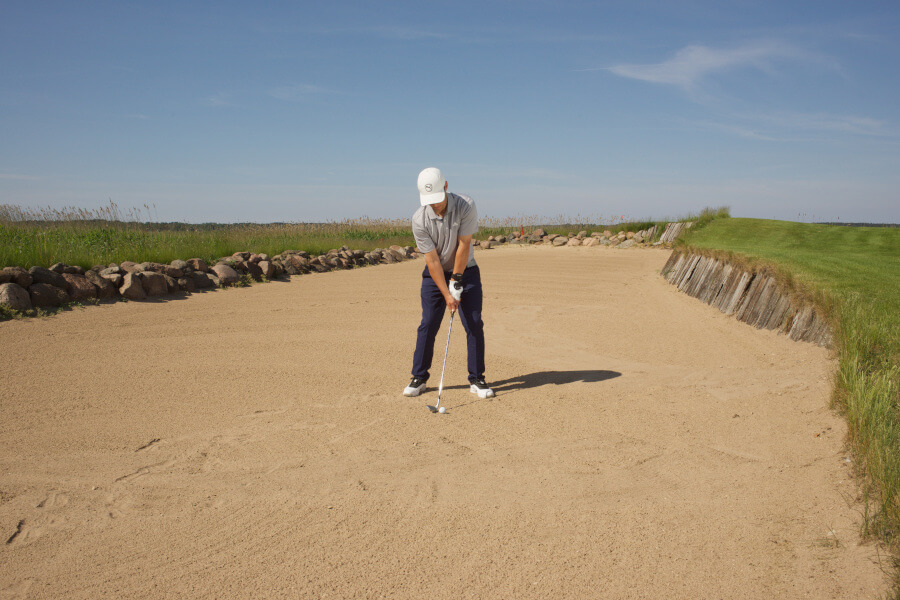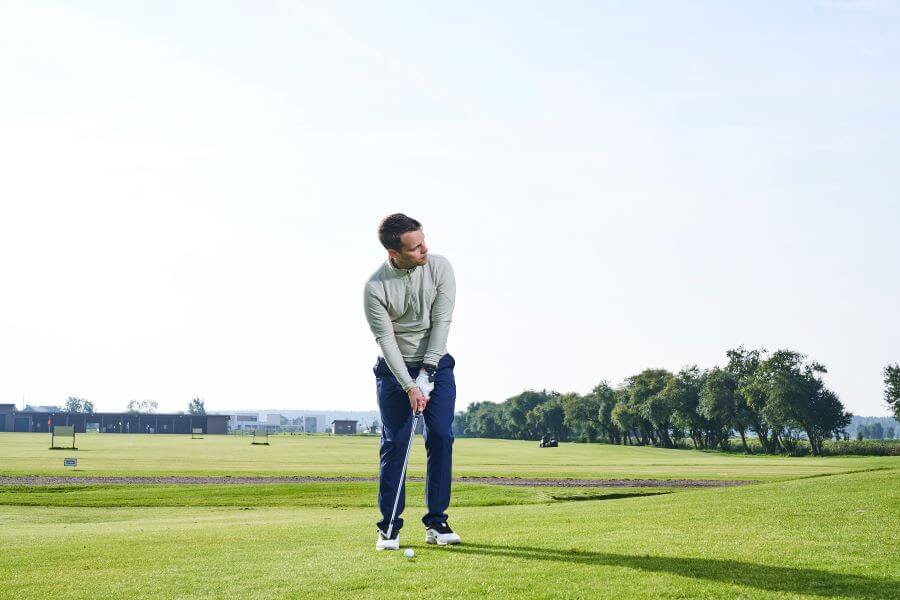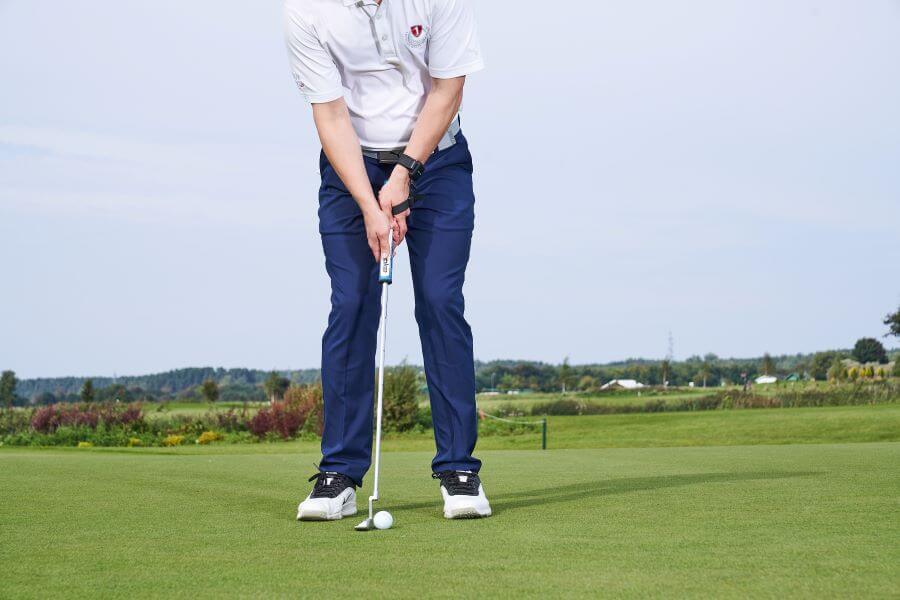Chipping vs Pitching – What is the Difference & When to Use Them? (Answered!)
Chip and pitch shots are talked about as if they are the same thing. They are not.
Understanding the difference between chip and pitch shots and how they will impact your golf shots and ball flight is a tremendous way to improve your short game and take it to the next level.
By the end of this post, you will know exactly how to set up and execute and chip and pitch shots for enhanced short-game results.
In addition, I explain how your ball position, wrist extension, and weight distribution impact your chip and pitch strikes.
Chipping vs Pitching (Key Takeaways)
If you don’t have time to read my entire guide on chipping vs. pitching, here are the key things to understand before you move on.
- A chip shot has a lower ball flight and more roll than a pitch shot with a higher ball flight, more spin, and less roll when it hits the ground.
- To hit great chip shots, you want the ball a little further back in the stance, more weight forward, and a short and compact swing.
- Expect the ball to fly about a third of the way and roll two-thirds of the way.
- For a pitch shot, weight is equally distributed, the hands and wrists are a little more involved, and the idea is to get the ball up higher with more spin.
- Chip and pitch shots are almost always played with wedges. However, the 9, 8, and 7 iron can work for chip shots.
Contents
What are the Differences Between Chipping and Pitching
There are a few key differences between the chip and the pitch that you should understand. Correctly identifying these golf shots is the first step in correctly executing them.
Ball Flight
The most significant difference to the naked eye between chipping and pitching boils down to ball flight.
A pitch shot typically flies higher and longer than a chip, causing the ball to bounce and stop rapidly near your target.
Conversely, a chip shot generates minimal launch and hits the turf after a short distance in the air before rolling to the cup. Therefore, a ball spends longer in the air on a pitch shot than a chip.
Ball Position
Ball position differs for pitches and chip shots as you aim to achieve varying degrees of launch and roll. Since chip shots are designed for a lower launch, reduced flight, and increased ball roll, your ball should sit toward the back of your stance.
Placing the ball at the back of your stance sets you up to hit it with a delofted clubface, launching it low and rolling it to the cup. On the contrary, golf coach Chris Ryan recommends positioning the ball in line with the center of your sternum.
When your ball sits in the center of your stance, it allows you to weaken the loft of your clubface and get slightly under the ball at impact. As a result, it helps you launch it higher for greater carry distance and a quick bite.
Wrist Mechanics
Scott Cowx explains that wrist mechanics differ between a low launching, smooth rolling chip to a pitch.
In this clip, you notice how the PGA of Canada Teacher of the Year reaches flexion on the backswing for a chip shot before it decreases at impact. Understanding wrist angles in pitch and chip shots can make you a better player.

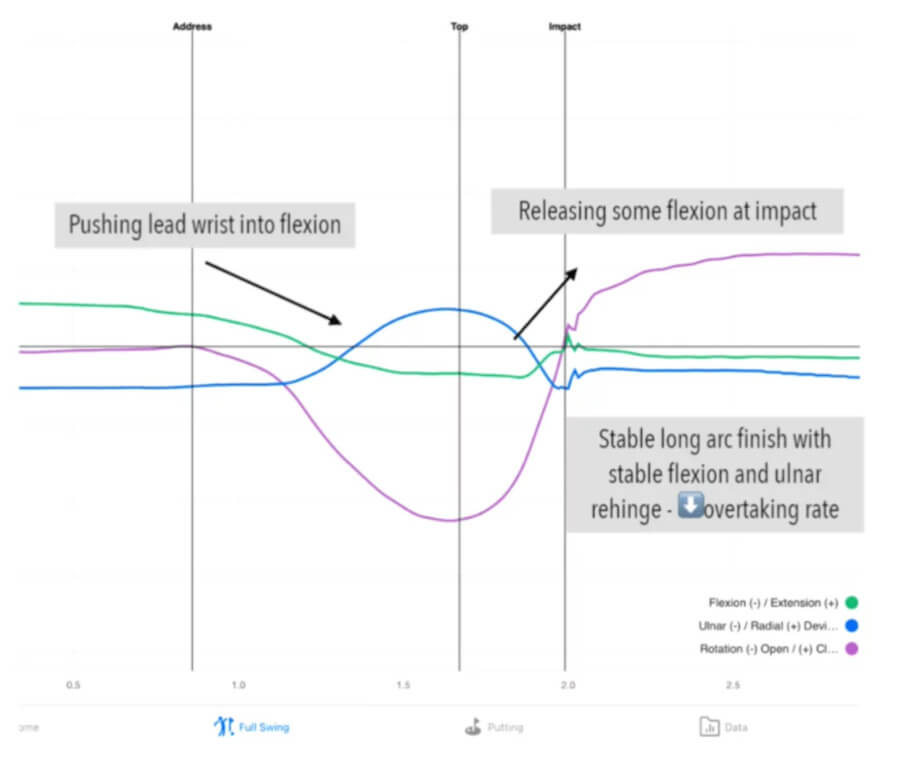
Following this path helps him guide a delofted clubface to the ball for a controlled launch and increased run. We can further understand the wrist flexion on the backswing by using the analytics provided by the HackMotion wrist sensor.
Next, Cowx employs a solid extension on the backswing for a pitch shot, helping him get the shaft into an “L” shape at the top of the swing.
From there, you have the leverage to release the golf club and produce slight flexion at impact to get under the ball and launch it for optimal carry, hop, and stop spin.
Forward Shaft Lean
Although golf coaches suggest placing 55% of your weight on the front foot for chips and pitches, the results differ.
A back ball position with extra weight on the lead leg creates a forward shaft lean for a chip shot. This setup promotes a downward strike, with a delofted clubface to produce a lower-flying golf ball and maximum roll.
On the contrary, a pitch shot requires a center ball position. The ball position decreases forward shaft lean despite placing 55% of your weight on the front foot.
This sets you up to weaken the loft of the clubface at impact, get under the ball, and produce a higher launch required for a successful pitch.
Roll
Since the ball launches lower when chipping and lands faster than a pitch shot, it carries adequate forward roll.
It propels the ball along the ground to roll toward your target.
However, a pitch shot flies high and stops rapidly, with a limited ball roll for optimal distance control and accuracy.
What the Pros Teach Us About Pitching and Chipping
HackMotion has collected data from more than 1,000,000 golfers to determine what wrist action should look like on a standard chip and pitch shot. Some of the most important data we collect is from the professionals. Here is what you can learn.
Pitch Shots – Lower (From 75 Yards)
Professionals are good at controlling ball flight. Therefore, on a pitch shot, they may still be able to keep the ball flight down a bit but get the golf ball to stop close to the hole.

When analyzing wrist angles on these pitch shots, we notice a high level of rotation through impact, and the lead wrist is flat or slightly extended at impact. The result is a lot of spin but a more penetrating ball flight.
Chip Shot (From 30 Yards)
Chip shots have much less wrist rotation than pitch shots. You will notice the lead wrist stays relatively stable or square throughout the chip shot, most golfers start and finish the chip with similar lead wrist extension throughout.
Chip shots will be more controlled and have less spin and power.
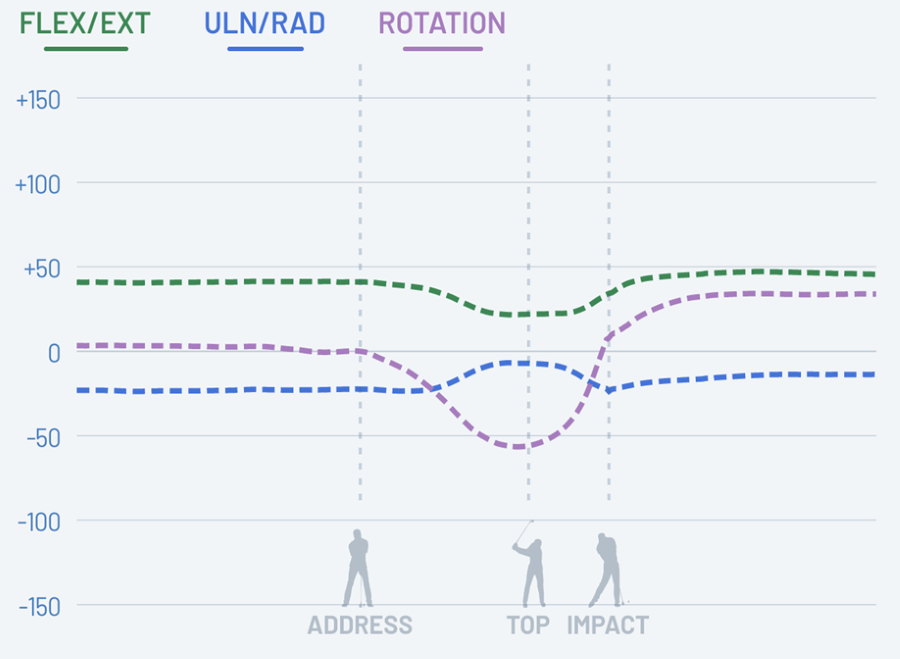
Pitch Shot – Higher (From 75 Yards)
Professionals don’t always want to hit the lower lofted pitch; sometimes it’s’ time to get the ball up high and let it land soft.
The biggest difference we see from professionals who are hitting a higher lofted shot vs. a lower lofted shot is the amount of lead wrist extension.
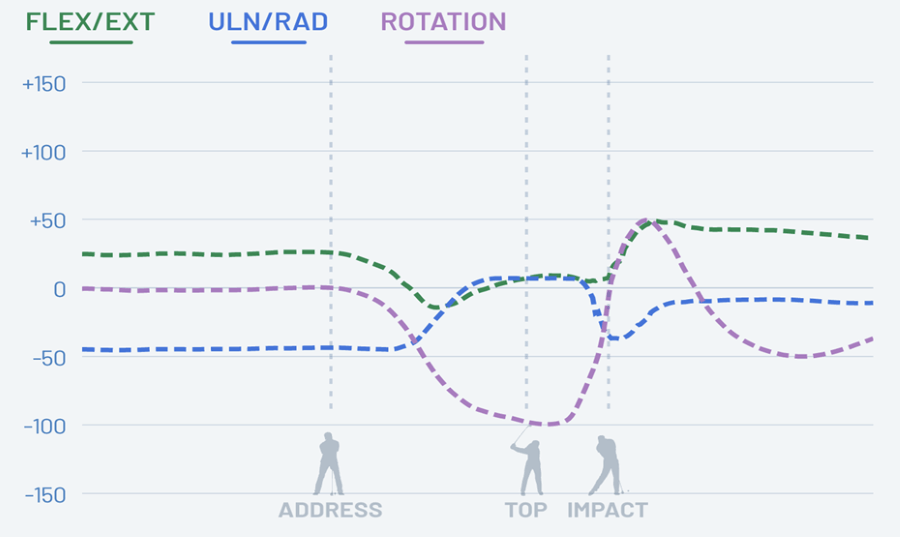
Higher lofted shots require increased lead wrist extension, meaning that the club slides under the ball a little more, and you can get that feeling of “hitting under it.”
Wrist hinge, extension, and moderate rotation lead to a more successful pitch shot with high loft.
In summary, it’s possible to hit high and low pitch shots, and professionals do this often. However, the higher you need the ball to go, the more you will want to hold on to that extension through impact.
When Should I Hit a Chip Shot?
A chip shot is best saved for occasions from the fringe of the green when there are fewer obstacles in front to roll the ball to the cup. You can also use this from the approach as long as there is nothing between you and the pin.
When Should I Hit a Pitch Shot?
Attempting a pitch shot is recommended when you still have ground to cover and must hit the ball up and over something. The higher launch and ball flight allow you to clear the rough or fairway in your line and land the ball near the cup with exceptional bite.
How do I Hit a Chip Shot?
Here are the steps to hit a basic chip shot. Make adjustments based on the club you are hitting and the speed of the greens you are playing.
1. Stand Closer to the Ball
The first step to setting up for a chip shot is to stand closer to the ball than usual. This angle leaves less of the sole interacting with the ground, encouraging a clean downward strike that produces adequate roll.
2. Position the Ball Towards Your Back Foot
Coach Chris Ryan explains that the ideal ball position for a chip shot is marginally behind the buttons on your shirt.
3. Place Weight on Your Lead Leg
The next step is to place approximately 55% of your weight on your lead leg to create forward shaft lean.
Setting up this way encourages a delofted clubface angle at impact to generate a lower launch and improved roll.
4. Lead Wrist Flexion
Following Scott Cowx’s advice, achieving a bowed lead wrist at the top of the swing is imperative.
Entering this position on your backswing sets the club on plane to descend into impact with forward shaft lean and less loft, promoting lower flight and better roll.
How do I Hit a Pitch Shot?
Remember, the pitch shot will fly slightly higher and stop quickly on the green. Most pitch shots are also used when standing a bit further from the hole (40-70 yards).
1. Stand Further Away From the Ball
Contrary to a chip shot, a pitch requires you to stand the same length away from the ball as you would for a standard short iron shot.
2. Center Ball Position
As your objective is to produce increased carry yards over a pitch, you should strike it with a weaker lofted clubface.
A central ball position leaves you sufficient time to get the clubface into place to get under the ball at contact.
3. Weight on Your Lead Leg
Weight can be evenly distributed or pushed a little to the lead leg when hitting these types of pitch shots.
Getting into this position reduces your risk of falling back on the and topping your golf ball.
Instead, you transfer your weight seamlessly from the backswing through impact for a controlled launch and enhanced bite.
4. Lead Wrist Stable Extension
Coach Cowx finds that creating a healthy dose of lead wrist extension on the backswing gets the golf club into an “L” shape.
Reaching this position at the top of your backswing prepares you to release the club on the downswing and generate minor flexion to get the clubface open and strike under the ball.
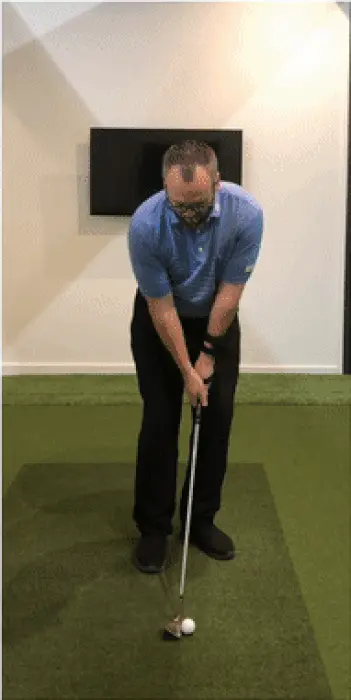
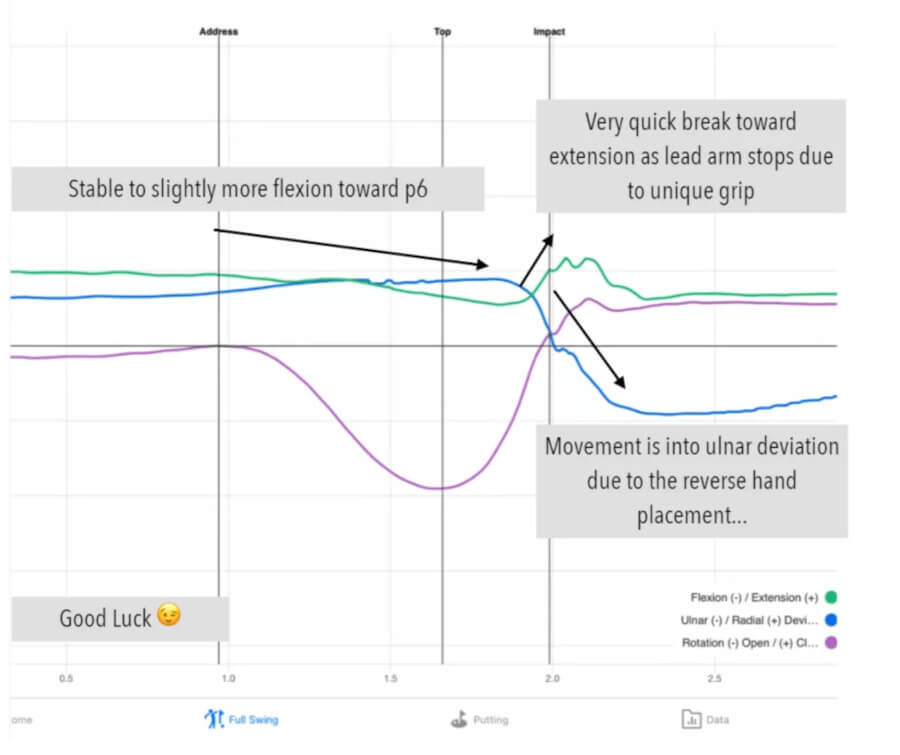
Final Thoughts
Despite both shots falling under the short game category, chipping vs pitching differ in ball flight and roll. In addition, they demand different ball positions and wrist flexion and extension.
To enhance your wrist positioning for chipping and pitching, try the assistance of the HackMotion swing analyzer.
HackMotion technology with detailed analytics offers superior insight into your wrist positioning throughout the golf swing.





